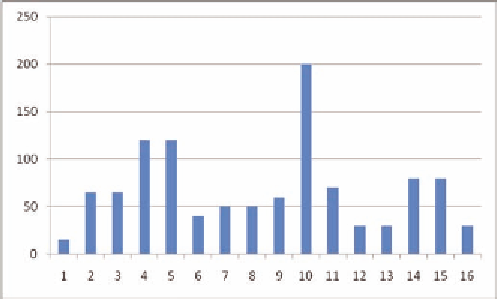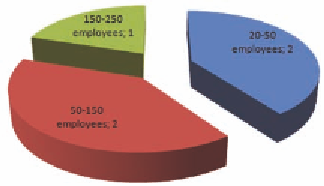Information Technology Reference
In-Depth Information
Figure 6. Size of the organizations on first research
Figure 7. Organizations with a well defined busi-
ness strategy
Strategic Alignment;
Business and IT Goals
Only 5 of the organizations had a well-defined
business strategy, with strategic lines and business
goals. The figure shows the sizes of the organiza-
tions (Figures 5 and 6):
As a common element, the organizations have
a very professional managing team, with a clear
separation of functions. But, instead of a busi-
ness strategy, the existence of a set of business
objectives or goals should be considered as an
alternative. Regarding this, all the companies (not
the agrarian organization) had a set of business
goals defined. Nevertheless, the business goals are
monitored yearly, which cannot be considered as
a good managing practice(Figure 7).
There was no company or organization with
an IT strategy defined. But, as an alternative, the
existence of IT generic goals was considered.
The goals identified (on all the companies) falls
under this two types:
And, finally, the last aspect was the identifi-
cation of IT as a key factor that drives business
strategies. There were two situations identified:
•
A real estate promotion company uses IT
as the only channel to sell its real estate de-
velopments (by positioning its products on
search engines such as Google Adwords,
and a daily follow-up, optimizing the
searching criteria).
•
A pharmaceutical distribution company
uses IT as a way to obtain key information
for the strategic decision making process,
on critical aspects on its value chain: stock
information, and transportation routes
optimization.
•
Implementation of information systems
(ERPs as Navision or SAP) or other IT-
related systems (websites).
•
Systems maintenance or new functionality.


Search WWH ::

Custom Search